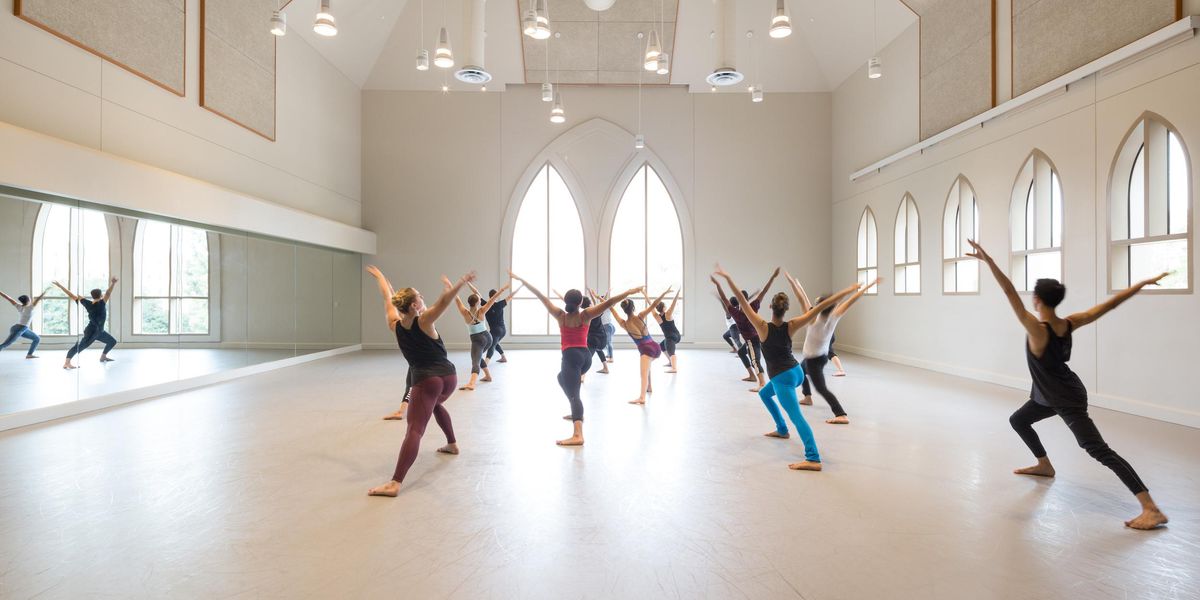This Contemporary Choreographer Also Makes Winning Ice Dance Routines
Contemporary dance world darling Jonah Bokaer takes his work very seriously, and it shows. Highly focused on craft and unconstrained by the traditional definition of a choreographer, the former Cunningham dancer has developed dance apps, pioneered new relationships between visual art and dance, and worked with collaborators as illustrious as Pharrell Williams.
But fans of his heady, intellectual work may be surprised by a recent project that he calls one of the most rewarding of his life: Choreographing for Team USA ice dance pair Lorraine McNamara and Quinn Carpenter. Bokaer was introduced to the pair by the mother of one of his company’s supporters, who just happens to be an Olympic ice skating judge.
We talked to Bokaer—who, true to form, takes his work for the ice incredibly seriously, too—about what it was like to go back to basics as a non-skater, and why he thinks skating is even more technical than ballet:
On Starting from Square One
Bokaer had minimal ice skating experience when he began working with McNamara and Carpenter, and on his first day he fell down immediately after stepping onto the ice. (He says his skating has improved somewhat since then.)
“I felt as though I was going back to square one in terms of learning a new language,” he says. “It involved becoming a beginner again.”
Following in Twyla’s Footsteps
After agreeing to choreograph for the ice, Bokaer (predictably) began an exhaustive research project, learning about ice dance and looking for a precedent of concert choreographers working in this medium. “One of the few I was able to find was Twyla Tharp choreographing for John Curry in the ’70s,” he says, “which led to USA receiving the Gold.”
On His Free Dance Routine
While most ice dance routines are set to pop music or songs with lyrics, Bokaer’s free dance piece for the duo—which earned them an overwhelming win at Lake Placid Ice International last year as well as other accolades—is set to Yann Tiersen’s “Porz Goret.”
“I believe it was an elegant choice,” says Bokaer. “I wanted to create something that was unforgettable and unique. We were working closely with the music, breaking down the minutiae of the score.”
“I approached it in terms of a portrait of the skaters themselves, creating something extremely customized for them,” he says. “What was special was getting to know them and who they are as artists.”
On the Rehearsal Process
“Sometimes I would visit the rink and choreograph for them on ice; sometimes they would come to New York and work in my studio off the ice,” he says. “It was a process of trial and error. I had more limitation on the ice and then in the studios the skaters had more limitations because they didn’t have their skates. There’s a conundrum there. The translation of footwork is what fascinated me and coming up with a system with how you could rehearse on either.”
Bokaer says one of the most fascinating parts of the experience is that the routine is expected to change throughout the competition season. “It’s a process of constantly adapting it in response to studying competition and the technical elements that need to take place,” he says.
On the Differences From Concert Dance
“The closest comparison to ice dance in pairs would be a pas de deux in ballet,” he says. “But in lifts, the man’s hands can’t go above their shoulders. It’s tremendously technical, much more technical than ballet. And it’s absolutely different in terms of orientation. The ice is several times larger than the world’s biggest stages. In terms of how you’re communicating to an audience, there are much bigger expectations of energy and expression. It’s also a double performance in that the skaters have to perform to the judges but they also have to perform 360 degrees around them.”
Why He Does It
“To see world class athletes performing my choreography is very rewarding to me as an artist,” he says. “And to have a personal connection to the skaters, much like I have with all my dancers.”




